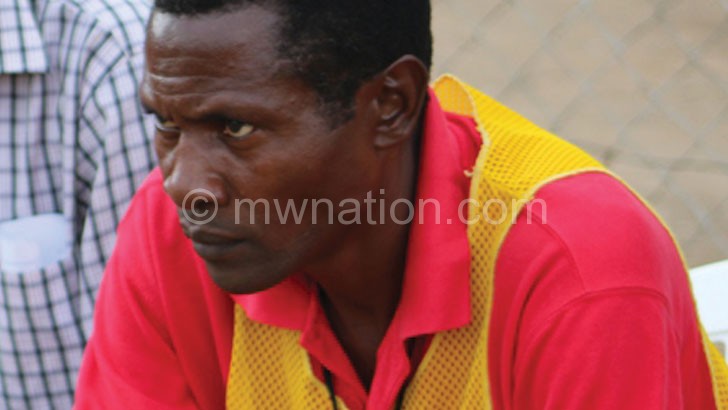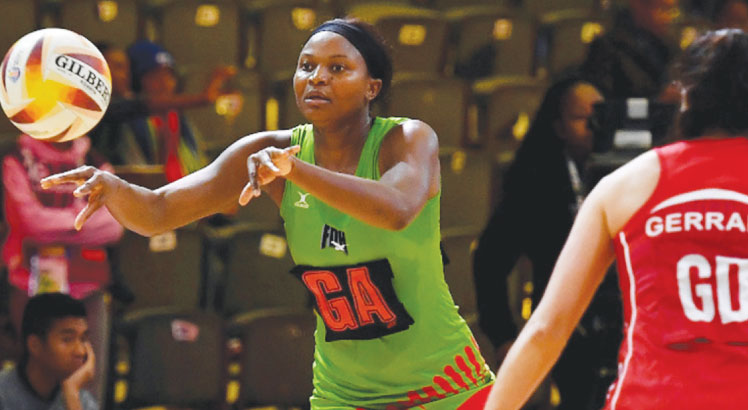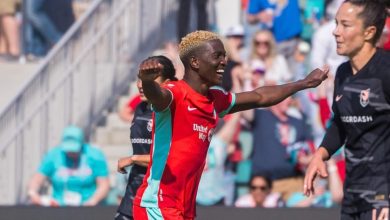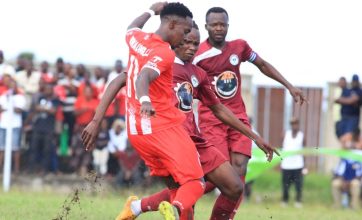Women football defies challenges
Malawi women national football team might have failed to fulfill their dream of winning the Cosafa Women’s Tournament, which ends today in Bulawayo, Zimbabwe, but their fairytale overall performance is worth celebrating, according to analysts.
The team, which returned to competitive football after four years, shrugged off effects of shoddy preparations that included not having an international strength-testing match prior to the contest, to ably match in strength with Council of Southern Africa Football Associations (Cosafa) heavyweights and defending champions Zimbabwe following a three-all draw.

A 6-3 victory over debutants Madagascar was another reason to smile, although a loss by a similar margin to Zambia dampened their hopes of making the grade for the semi-finals from Group A.
Many saw the team’s unexpected performance as a result of some striking brilliance of Sweden-based women football export Tabitha Chawinga and her younger sister Temwa, who has just joined her at Kvarnsveden IK to become the country’s third overseas professional, alongside Austria-based defender Chisomo Kazisonga.
Nevertheless, observers believe Malawi’s polished display on the international stage has helped to raise the profile of the women’s game, and might soon enhance its marketability to the corporate world.
Currently, domestic women football competitions lack corporate support and do not get adequate financial backing from the Football Association of Malawi (FAM) and government. The girls only rely on Fifa/FAM Cup regional leagues and the Presidential Championships, which have unsatisfactory prizes.
The last time women football had corporate support was about three years ago through Donna’s Eggs Tournament. Matindi Private Academy also once bankrolled a schools competition. Of course, the national team had a two-year break from international participation—between 2013 and 2015—for rebuilding after poor results, but the hibernation was poorly supported.
“We believe the performance of our girls at Cosafa has generated enough interest from the corporate world,” said National Women Football Association (NWFA) chairperson Severia Chalira.
“In the past, we used to knock on the doors of many companies, seeking support but they were reluctant to help as they had not sampled our girls’ performance. We believe the corporate world will now make a fair judgment and consider sponsoring the game. If we are able to perform with limited resources, what more if we had adequate support?”
She added that the recent performance of the national team has given them confidence to bid for team’s first-ever participation in the Zone V1 Games scheduled for Botswana and the Cosafa Under-20 Championship in Lesotho next year.
However, there are more challenges facing women football in the country than what meet the eye. For example, unlike their male counterparts, elite women football competitions, including the Presidential Championship, are played on not so good pitches such as the threadbare Katoto Secondary School ground in Mzuzu.
Even the rare friendly match, which saw Malawi losing 2-3 to Zambia last December, was played at the dreaded Nankhaka Stadium in Lilongwe. But, probably, Nankhaka can be forgiven for at least having a proper dressing room; some venues have no changing rooms and as a result, girls have no option but to dress in front of spearing eyes of male spectators.
It is also sad that women football is denied an opportunity to expose its talent to the masses through curtain-raising high profile TNM Super League games due to weird beliefs. Some elite men’s clubs superstitiously believe sharing a pitch with women has a potential to cast a spell on their performance.
“We are forced to play our games in the morning because almost all the pitches are booked by men’s clubs, who are not willing to let us curtain-raise their games,” said Blantyre Zero mentor Maggie Chombo-Sadiki, who is also national team assistant coach.
Lack of proper grassroots women football structures as well threatens to drive a knife into the back of the game. There are no events for the age-range of six and 15 as is the case in other countries, and the Under-20 initiative, which was introduced last year, lacks meaningful support.
According to Charles Mwenda, owner of national champions Skippers, the dearth of motivation to women football clubs is another factor that both FAM and NWFA need to sort out because what the clubs invest is far too much compared to the gains.
“Since I started sponsoring Skippers, over five years ago, the only motivational tool we got from our mother body was a single soccer ball. But take into account what is involved to sustain a team; they need paraphernalia such as boots and uniforms, aside from other necessities such as transport, food and allowances.
“Yet, when we go to the finals of the national competition, such as the recent Presidential Cup, we get only K2 million prize money as champions. For the team to travel and get accommodated in Mzuzu for three days, I spent almost K1.5 million. Now, what about what I spent during the qualifying games. I support Skippers just because I have passion for the game,” said Mwenda.
He agreed with Blantyre Zero owner Sadiki Malinga that NWFA intention to introduce club licensing this coming March is a non-starter considering the state of women football standards in the country, although Chalira says they would not go deep as the most important factors are for clubs to have coaches with minimum Confederation of African Football (CAF) C Licence and an executive committee.
FAM general secretary Alfred Gunda admitted that there are a number of problems they need to sort out to make women football vibrant. He, however, said this needs a joint effort from all football stakeholders.





